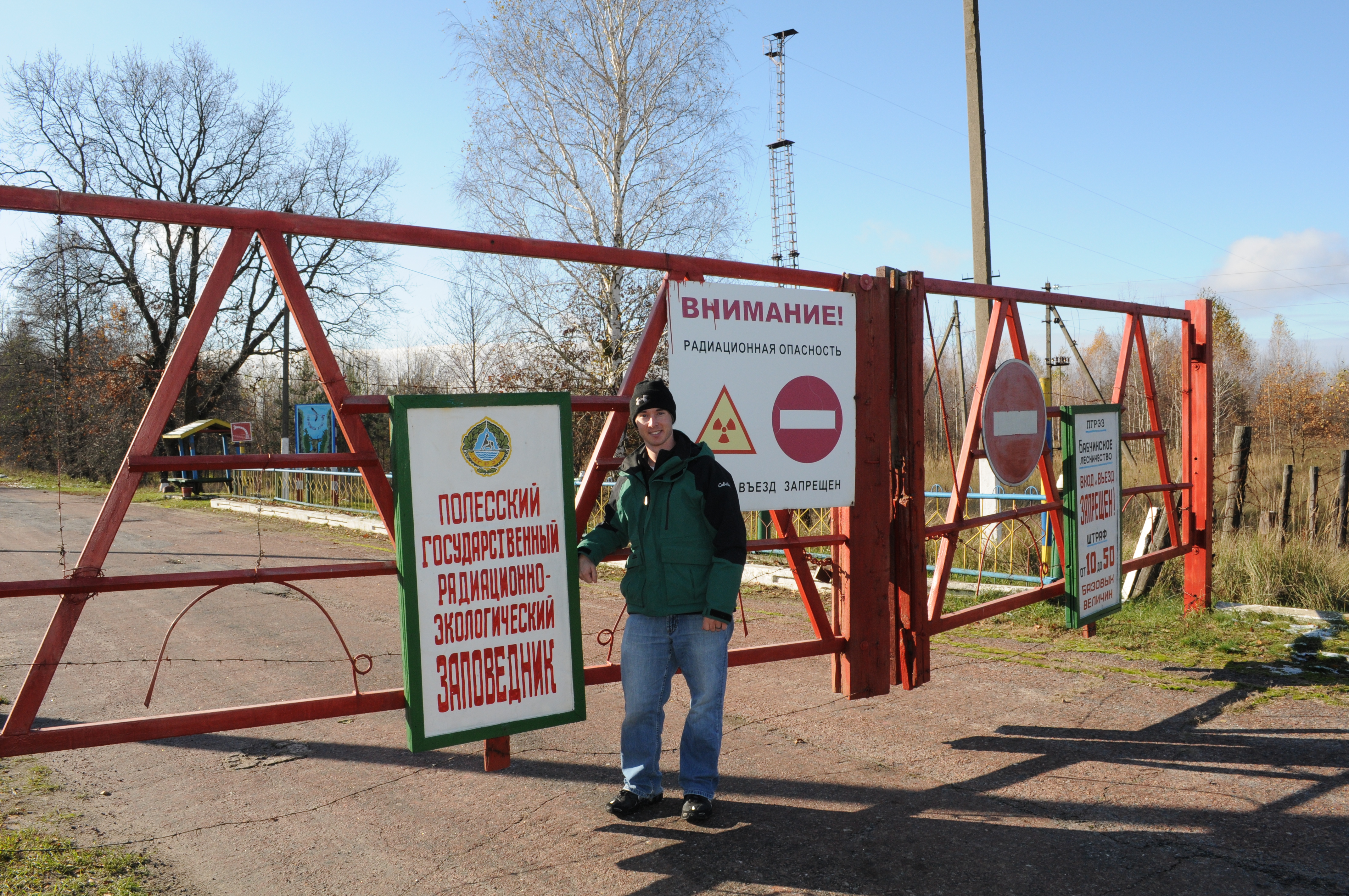
Speaker Spotlight: James Beasley
James Beasley spends a lot of time answering questions about two-headed animals.
As a University of Georgia wildlife ecologist working on a study at the Chernobyl nuclear power plant in Ukraine, Beasley says one of the first things people routinely ask about is mutations. He is good-natured about these queries and tries to address the misinformation popularized in entertainment channels.
“There’s an incredible amount of mystery around what’s happened to the wildlife in nuclear areas, and with video games and fantasy movies [portraying nuclear fallout], that’s the first thing that comes to mind,” Beasley says. “Some aspects are true, but some are overly dramatized.”
Beasley didn’t start out thinking about the impact of radioactive fallout on wildlife. He grew up in rural New York state (he promises there is, in fact, a rural side to New York), with state forests behind his house “full of ponds and nature in general.”
“I always had an interest in wildlife, and that interest evolved over time,” Beasley says. “When you’re in high school thinking of what to do on career day, it’s a police officer or a fireman who comes in, not a wildlife ecologist. But I went into a college environmental wildlife program and realized the opportunities there, and just gravitated toward the research side.”
Wildlife ecology is a challenging career, Beasley says. “It’s not the highest paying, there are not many available, and it takes hard work and dedication to make it. But if you enjoy being outdoors and working with animals, there are not many jobs that are quite as rewarding.”
Beasley says there is a great deal of interest in the wildlife community over how human activities such as agriculture and urbanization impact wildlife populations, and it turned out that abandoned nuclear areas fell into that line of interest. He is stationed at the Savannah River Ecology Laboratory, a UGA research unit in Aiken, SC, located on the Savannah River Site. The site is home to several inactive nuclear reactors and has been used to study long-term environmental effects of those industrial activities, and Beasley says this gave rise to a unique opportunity to collaborate with colleagues on the Chernobyl study.
SREL is a secured campus that often seems mysterious to the people in Aiken, Beasley says, so when he goes into town for things like hair cuts, often he’ll be asked if there are two-headed deer or mutant animals on the site. He does his best to dispel the myths and put everything into context. But he’s not surprised that with a location like Chernobyl, the mystery and misinformation can be even bigger.
Because of the sudden evacuation after the Chernobyl disaster, many homes and businesses were left in a hurry. “Chernobyl is spooky enough by itself,” Beasley says. “There are creepy abandoned houses with animals living in them, and trees growing through them; everything a sci-fi story needs. You don’t need two-headed monkeys running around.”
Beasley hopes that the long-term results from the Chernobyl wildlife studies, specifically of the wolf population there, will begin to address some of the misinformation, as well as give researchers more data about the health and current status of the animals.
“We still don’t know all of the details, and there is a lot more work to come, but these are long overdue studies,” Beasley says. “We would like to get the message out there that wildlife is incredibly resilient … and can do amazing and surprising things.”
Join us at TEDxPeachtree 2016 where Beasley will share images from the Chernobyl study.
Photo credit: James Beasley
 Aly Merritt is a former copy editor with a residual addiction to journalism. She is currently a product manager at SalesLoft, and sporadically blogs at www.AlyintheATL.com.
Aly Merritt is a former copy editor with a residual addiction to journalism. She is currently a product manager at SalesLoft, and sporadically blogs at www.AlyintheATL.com.

Leave a Reply